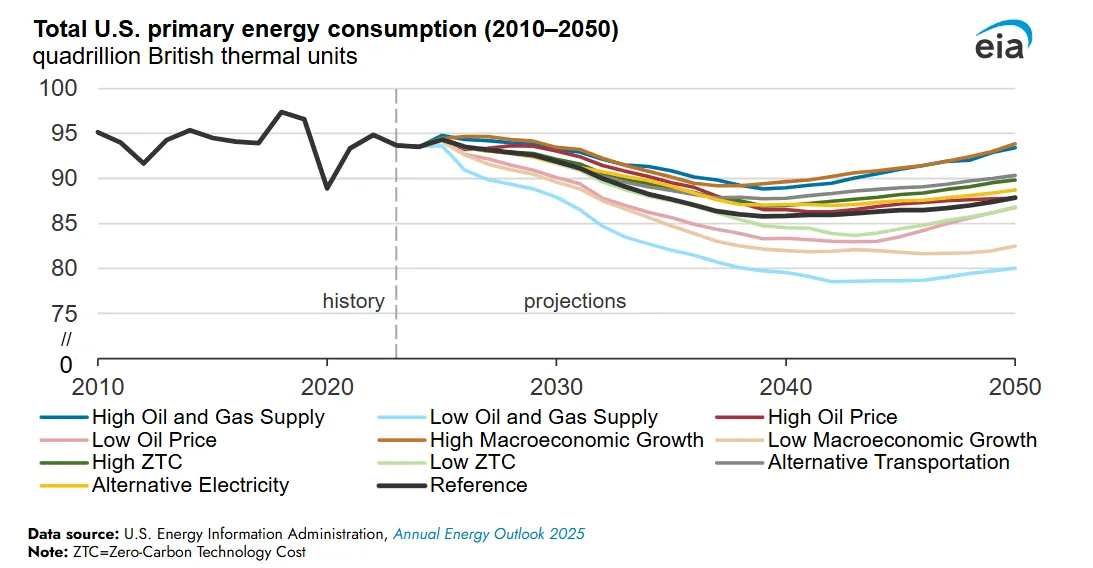Total energy consumption in the United States will decline through 2040 before beginning to increase again, the Energy Information Administration said Tuesday in its Annual Energy Outlook. Efficiency, and the report’s methodology, both play a role in the decline.
The report also indicates significant growth in the production of renewable electricity through 2050, alongside a decline in coal generation.
On the efficiency side, corporate average fuel economy and tailpipe emissions standards have a significant effect in the transportation sector, EIA spokesperson Chris Higginbotham said in an email.
“Updated end-use equipment standards are a big factor for buildings, most notably for residential electric water heaters and natural gas furnaces,” Higginbotham added. “In the industrial sector, some increased adoption of electric boilers and industrial heat pumps contributes to flattening energy use; electricity-based equipment is typically more efficient than natural gas boilers.”

On the methodology side, Higginbotham said EIA is now using a “captured energy approach” for noncombustible renewable energy for electricity generation, which applies a constant conversion factor of 3,412 British thermal units per kilowatt-hour.
“We used a fossil fuel equivalency approach in previous long-term projections,” he said. “It’s important to note the methodology change because it affects the accounting of total energy use. With the projected adoption of more renewable energy sources, electricity losses do not increase as quickly using the captured energy approach as with the fossil fuel equivalency approach we previously used.”
The annual report sees renewable energy production, including wind and solar, growing from 2.57 quads in 2024 to 13.92 quads in 2050. A quad is equal to one quadrillion British thermal units.
U.S. coal production will decline from 10.26 quads in 2024 to 3.78 quads in 2050. Natural gas production will rise modestly, to about 43.5 quads in 2050, up from about 40 quads in 2024, according to the outlook.
“Today’s report from EIA reflects the disastrous path for American energy production under the Biden administration,” Department of Energy spokesperson Andrea Woods said in a statement.
President Trump has vowed to support fossil fuel production and earlier this month signed executive orders aimed at supporting coal mining and coal-fired power plants. His administration has also made several authorizations aimed at increasing liquefied natural gas exports.
A Thursday report from the Center for Energy & Environmental Analysis concluded that, despite record levels of domestic gas production in the first quarter of this year, gas prices increased by 93% compared to the same period last year.
“Actions taken by the Trump administration to increase natural gas exports, increase natural gas consumption, and limit renewable energy and energy efficiency exports are likely to further increase energy prices and price volatility for US industry and consumers,” the group said in a statement.















